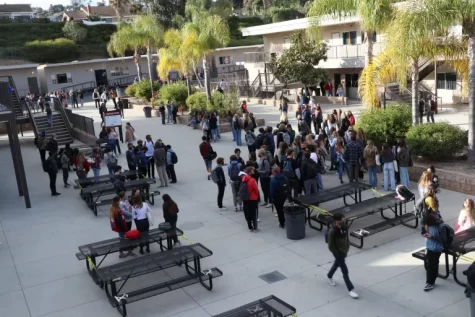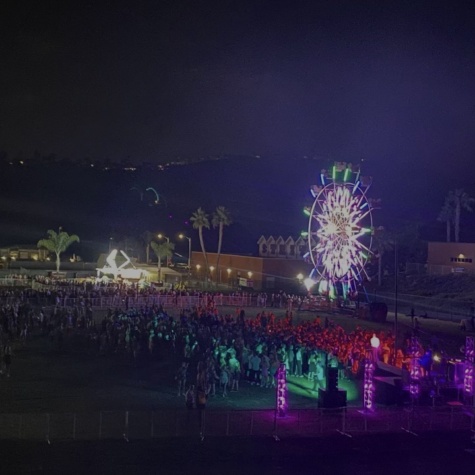
Nicolle Generaux | Arts and Entertainment Editor
October 9, 2021
The COVID-19 pandemic has taken a lot from students, including extracurricular activities. Sports, dances, concerts, school trips—many of these can be the highlight of the year for students, as it is the time to de-stress and enjoy time with friends. Due to the circumstances, however, the school and district have limited these activities over the past year in order to limit the spread of this virus.
COVID-19 has affected everyone, and we should work to—at the very least—lessen the spread. But how far are we willing to go to do that? While a percentage of students diligently follow the mandates and requirements put out by the school, others may view regulations as irrational or unnecessary.
According to the COVID Guideline Updates, which can be found in the District News section of the San Clemente High School website (updated October 1 of this year), unvaccinated students, if exposed to COVID with or without wearing a mask, “may continue to attend school for in-person instruction” if they are “asymptomatic, continue to appropriately mask, undergo at least twice weekly testing during quarantine,” however they must quarantine from extracurricular activities both on and off campus for at least 14 days.
It is important to note that the district will allow students who have simply been exposed to COVID to go to in-person school, where one is in close-contact with other students and teachers, but not to any other activities besides that. The only reasoning for this is that outside events are “extracurricular activities where masks cannot be utilized by students.”
However, even if students “appropriately mask” during school hours, they can still take the masks off the second their feet leave the classroom. Doesn’t this risk the exposure of COVID-19 to more students, just the same as extracurricular activities?
During breaks and passing periods when students are not wearing masks, they lack facial covering for a span of 10 to 45 minutes. This can total over an hour and a half of time without a mask throughout the school day. Extracurriculars, such as sports—most of which are outside—take this same risk, but over a longer period of time.
Therefore, wouldn’t a better solution be to quarantine the exposed student altogether, from school and extracurriculars? Wouldn’t that more effectively stop the spread?
This is not the only section of the regulations that students are upset with. Another part of the school guidelines state that unvaccinated students that are asymptomatic must quarantine for at least 10 days, but after the week and a half are permitted to return to school. Despite being allowed back in class, these students must continue to quarantine from their extracurriculars.
One unvaccinated student at SCHS was exposed to COVID on September 17, but was not informed of exposure until the 23. She self-quarantined and followed the district’s precautions for a week, including putting a hold on her sports practice and taking five COVID tests, testing negative for all of them.
When she arrived to the homecoming dance on October 2, it had been exactly two weeks since her exposure, and she was sure that she did not have COVID. She was denied entry because she had not been quarantined long enough, which had been marked by the school on her ID. The person who exposed her to COVID was not denied entry and went to the dance without a problem.
“There was no point,” the sophomore said. “I was never going to be allowed in.”
How is this fair? She took the precautions, quarantined herself, and made sure that she was tested several times before going to the dance—yet she was denied admission because she did not quarantine for another three days? Despite this, the person who had been the initial contractor of the virus still attended the dance without issue. There are holes in these regulations, and it prevented this unlucky sophomore from attending her first high school dance.
“I remember her [the student] feeling upset because she was told she would have to stop her sport to go to homecoming,” her sophomore friend said. “I felt bad that her high school experience would be overshadowed by arbitrary COVID regulations.”

After further research, another student was found to have been put in a similar situation, where she was denied entry from the dance after quarantining for the appropriate time. It is possible that there are more students with these same stories, but are unwilling to say anything for fear of the school’s response.
These extensive regulations, whether people say it or not, are stopping high school students from enjoying the fun and entertaining parts of school. COVID-19 has taken too much from people already—we do not need to lengthen that list because of overreaching mandates.
Of course, this is not necessarily the school’s fault, and, by extension, nor is it the school district’s fault. Collectively, the state of California should revise their implemented school COVID guidelines so students can prevent the spread of this virus, but not discontinue the important social and extracurricular parts of their lives to do so.

Leave a Reply